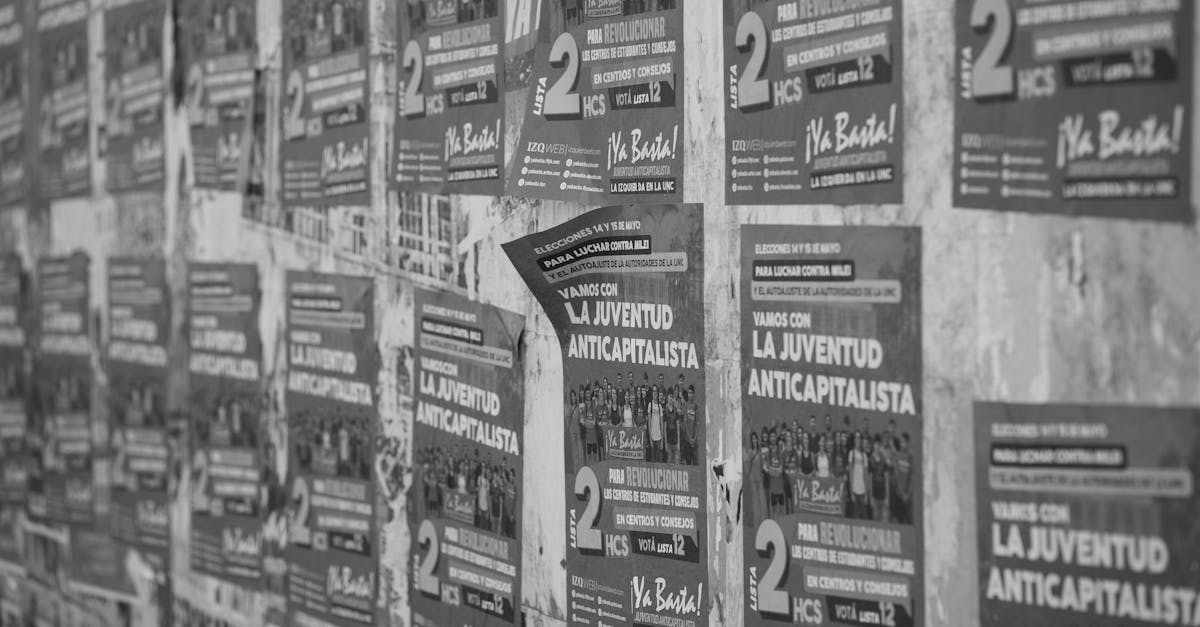In today’s world, political polarization feels like the new national pastime. It’s as if the country split into two teams, each wearing their colors with pride and throwing insults like confetti. But what’s behind this growing divide? It’s not just about differing opinions; it’s a complex web of social media echo chambers, partisanship, and a sprinkle of good old-fashioned human stubbornness.
As debates heat up and friendships cool down, understanding political polarization becomes crucial. It’s not just a buzzword; it’s a phenomenon that affects everything from local elections to global policies. So grab your popcorn and prepare for a deep dive into the quirky, often baffling world of political divides. Who knows? You might even find some common ground—or at least a good laugh along the way.
Table of Contents
ToggleUnderstanding Political Polarization
Political polarization describes the widening divide between opposing political ideologies. It affects discussions, decisions, and social interactions, making it essential to comprehend its origins and implications.
Definition and Causes
Political polarization emerges from multiple factors, including partisanship, ideology, and media influence. Partisan loyalty drives individuals to align strongly with a specific party or group. Ideological differences create a chasm in values and beliefs, preventing common ground. Media platforms amplify these divisions by presenting selective information, leading to echo chambers where individuals only encounter viewpoints that reinforce their biases. Social identity also plays a role; when individuals identify with a group, they often prioritize group interests over open dialogue and understanding.
Historical Context
Political polarization isn’t just a recent phenomenon; historical events shaped its trajectory. The Civil Rights Movement in the 1960s drastically altered political alignments, aligning Southern Democrats with conservative values and pushing progressives towards the Democratic Party. Over time, the Watergate scandal further entrenched divisions as trust in government eroded. The rise of talk radio and cable news in the 1990s contributed to partisan discourse, creating environments where extreme views gained traction. Each of these milestones intensified polarization, creating the current climate characterized by deep-seated divides.
Effects of Political Polarization
Political polarization significantly affects many facets of society. It leads to divisive interactions and can hinder effective communication between differing viewpoints.
Impact on Civil Discourse
Civil discourse suffers due to political polarization. People engage less in meaningful conversations and focus more on winning arguments. As a result, understanding diminishes amid entrenched positions. Heated debates often escalate into hostility, further alienating individuals. Additionally, those involved in discussions may resort to misinformation and oversimplification. In workplaces and community settings, such discourse creates barriers, discouraging collaboration and reducing trust. This breakdown generates a cycle of conflict that stifles progress and mutual respect.
Influence on Policy Making
Policy making experiences severe disruptions from political polarization. When party lines sharply divide legislators, cooperation decreases. This infighting leads to legislative gridlock, preventing essential laws from passing. Important issues like healthcare, education, and climate change often suffer from inaction. Compromise, once a common feature of governance, has become increasingly rare. Voters frequently pressure representatives to adhere strictly to party ideologies, limiting their willingness to find middle ground. Consequently, policies may reflect extremes instead of balanced approaches, impacting the effectiveness of governance in addressing complex societal challenges.
Measuring Political Polarization
Measuring political polarization involves both quantitative and qualitative methods to capture the nuances of ideological divides. These approaches provide insights into how individuals and groups engage within the political landscape.
Quantitative Methods
Quantitative methods use statistical analysis to assess polarization levels. Surveys and polls quantify public opinion, revealing ideological shifts over time. Political scientists often utilize metrics such as the “party in government” score to measure partisan alignment. Data from social media platforms also offers insights, as engagement levels often correlate with polarization trends. For example, the Pew Research Center frequently publishes studies highlighting increased partisan divides across various demographics. These numerical data points allow for a clearer understanding of how polarization influences electoral outcomes and legislative behavior.
Qualitative Approaches
Qualitative approaches offer deeper contextual insights into political polarization. Through interviews and focus groups, researchers explore how individuals perceive their political identities. These methods reveal personal narratives that quantitative data alone cannot capture. Analyzing media narratives and political discourse also enriches understanding of polarization dynamics. Case studies of specific events, such as major elections or protests, illustrate how polarizing issues emerge and evolve. Employing these approaches helps highlight the emotional and social factors driving polarization beyond mere statistics.
Strategies to Mitigate Political Polarization
Addressing political polarization requires targeted strategies to foster communication and understanding. The following approaches can help bridge divides.
Promoting Dialogue
Encouraging open discussions creates spaces for diverse viewpoints. Facilitating community forums allows individuals to voice opinions while nurturing active listening. Training programs on constructive dialogue equip participants with tools to engage respectfully. Organizations that promote cross-partisan discussions foster connections between opposing sides. Activating local initiatives can bring communities together and create shared experiences that diminish hostility.
Education and Awareness Campaigns
Implementing education initiatives raises awareness about political systems and civic engagement. Schools that incorporate curriculum focused on critical thinking and media literacy prepare students for informed participation. Public campaigns that highlight the importance of diverse perspectives foster empathy and understanding. Collaborations with influencers can amplify messages about the value of dialogue. Increasing access to nonpartisan resources equips individuals with tools to navigate the complexities of political discourse.
Political polarization presents a significant challenge in today’s society. Its effects ripple through conversations and policymaking, creating barriers that hinder collaboration and understanding. As individuals become entrenched in their beliefs, the potential for meaningful dialogue diminishes.
Addressing this divide requires intentional efforts to foster communication and promote diverse viewpoints. By engaging in community discussions and enhancing critical thinking skills, individuals can work towards bridging gaps that seem insurmountable. Embracing this journey may not only lead to improved discourse but also pave the way for more effective governance in tackling pressing issues. The path forward lies in the collective commitment to understanding one another, even amidst deep-seated differences.





